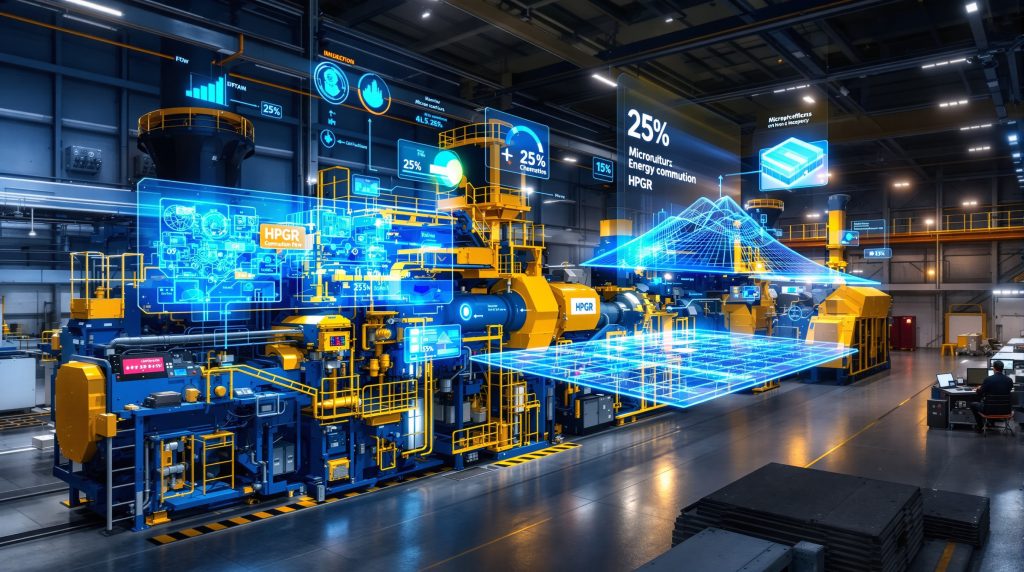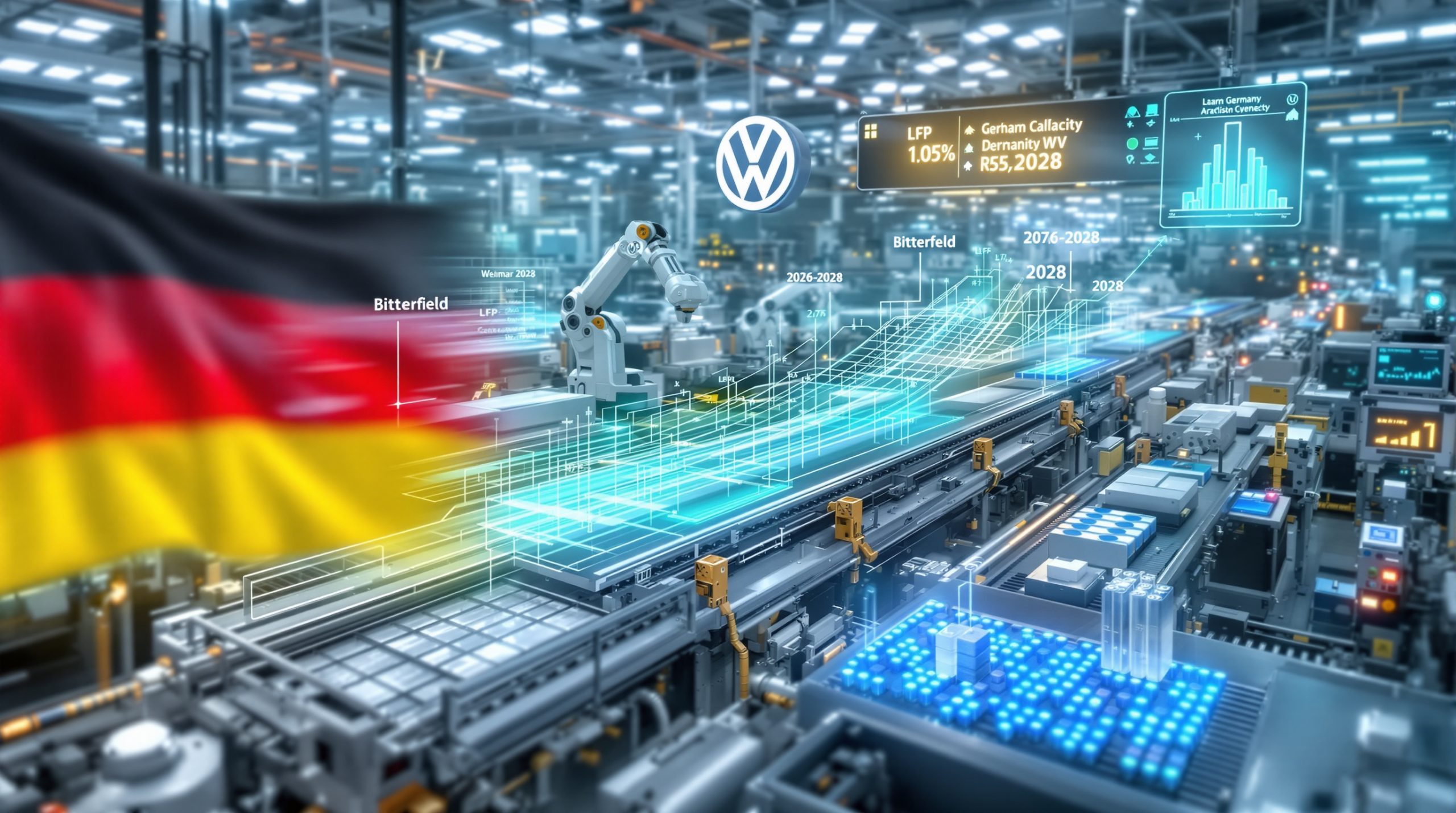Maximizing Efficiency: The Complete Guide to Integrated Comminution Solutions
Integrated comminution solutions represent a revolutionary approach to mineral processing that optimizes the entire ore reduction process as a unified system rather than separate components. This holistic strategy connects crushing, grinding, and classification operations through advanced technology, synchronized equipment, and intelligent control systems.
The significance of this integration cannot be overstated in today's mining landscape. With rising energy costs and declining ore grades, mining operations worldwide are increasingly adopting these solutions to maintain profitability while meeting stringent environmental standards.
When properly implemented across the flowsheet, integrated solutions deliver remarkable benefits: energy efficiency improvements of 15-30%, throughput increases of 5-25%, reduced maintenance costs, and enhanced sustainability through lower water and power consumption.
How Have Comminution Technologies Evolved in Recent Years?
From Standalone Equipment to Integrated Systems
The comminution landscape has transformed dramatically over the past decade. Traditional approaches focused on optimizing individual pieces of equipment in isolation, with crusher settings adjusted without consideration for downstream grinding, SAG mills operated independently of classification systems, and ball mills run based on fixed parameters regardless of feed characteristics.
Modern integrated comminution solutions now emphasize cross-equipment optimization where settings in one area directly complement others. This shift represents a fundamental change in philosophy: treating the entire comminution circuit as a single interconnected system rather than a series of independent machines.
Today's integrated approaches prioritize data-driven mining operations across the entire comminution circuit, real-time adjustments based on ore characteristics, and complementary technology selection where equipment is chosen specifically for how it works within the broader system.
Technological Breakthroughs Driving Integration
Several key innovations have enabled truly integrated comminution:
| Technology | Traditional Approach | Integrated Approach | Benefit |
|---|---|---|---|
| High Pressure Grinding Rolls (HPGRs) | Used as standalone grinding solution | Incorporated into circuits with screens and crushers | 15-20% energy reduction |
| Advanced Vibrating Screens | Basic separation only | Precision classification with crusher and HPGR circuits | Improved particle size distribution |
| Digital Twins | Equipment-specific modeling | Full-circuit simulation and optimization | Predictive performance improvements |
| Smart Sensors | Basic monitoring | Real-time adaptive control across equipment | Continuous optimization |
These technologies don't merely improve individual pieces of equipment—they fundamentally transform how the entire comminution process works together as a cohesive system.
What Components Make Up an Effective Integrated Comminution Circuit?
Primary Crushing and Size Reduction
The first stage of any effective integrated comminution solution begins with properly matched crushing equipment:
- Jaw crushers with improved control systems for consistent primary reduction
- Cone crushers with premium wear liners and advanced lubrication systems
- Impact crushers for specialized applications requiring specific particle shapes
These primary components must be selected not just for their individual performance but for how they prepare material for subsequent processing steps. The latest generation of crushers features sophisticated control systems and premium wear components that ensure consistent crushing performance—essential for downstream process stability.
Advanced Screening and Classification
Modern integrated solutions rely heavily on precision screening technology:
- High-capacity vibrating screens with specialized exciter technology
- Multi-deck banana screens for handling large volumes efficiently
- Custom screen media panels designed for specific ore characteristics
The latest generation of screens can generate forces exceeding 1 meganewton—equivalent to the takeoff force of a fully loaded commercial aircraft—applied 12-16 times per second for exceptional classification efficiency. This remarkable force allows these screens to handle unprecedented volumes while maintaining classification precision.
Weir's development of the LTX exciter generating over 1 mega newton force and the second-generation ETX exciter with 1.28 mega newton force represents a breakthrough in screening technology. As JD Singleton, Weir's Comminution Director for EMEA, notes, this technology has been nominated for awards and represents a significant advancement in vibratory screening capabilities.
High-Efficiency Grinding Technology
At the heart of many modern mine planning circuits are advanced grinding technologies:
- High Pressure Grinding Rolls (HPGRs) that create microcracks in ore particles
- Energy-efficient ball mills with optimized media and liners
- Advanced stirred mills for fine grinding applications
HPGRs in particular have revolutionized comminution flowsheets by reducing energy consumption by up to 30% compared to traditional SAG mill circuits while improving mineral liberation. Their ability to generate micro-fractures throughout mineral particles creates networks of tiny cracks that reduce energy requirements in subsequent grinding stages while enhancing overall metallurgical performance.
Intelligent Control Systems
The "integration" in modern comminution solutions comes largely from advanced control systems that:
- Monitor performance across all equipment simultaneously
- Adjust parameters based on upstream and downstream conditions
- Predict maintenance needs before failures occur
- Optimize energy usage across the entire circuit
These systems transform what would otherwise be separate machines into a coordinated processing system capable of responding to changing ore characteristics and processing objectives in real time.
How Do Integrated Comminution Solutions Reduce Energy Consumption?
Comparative Energy Efficiency Analysis
One of the most compelling benefits of integrated comminution is dramatic energy reduction. Consider these comparative scenarios:
Traditional Circuit:
- Primary crusher → SAG mill → Ball mill
- Typical energy consumption: 20-25 kWh/tonne
Integrated Circuit:
- Primary crusher → Secondary cone crusher → HPGR → Screen → Ball mill
- Typical energy consumption: 14-18 kWh/tonne
This represents energy savings of 20-30%, which translates directly to lower operating costs and reduced carbon emissions. As Singleton explains, "A key factor behind the success of ENDURON HPGRs and our complementary crushers and screens in the circuit has been the rising cost of electricity, affecting not only South Africa but many other countries in Africa."
Micro-Fracturing and Liberation Benefits
Integrated circuits that incorporate HPGRs benefit from the unique micro-fracturing effect:
- Creates networks of tiny cracks throughout mineral particles
- Reduces energy required in subsequent grinding stages
- Improves mineral liberation and recovery rates
- Enhances overall metallurgical performance
This micro-fracturing phenomenon is a fundamental advantage of HPGR technology that traditional grinding methods simply cannot match.
Real-World Energy Reduction Case Studies
A notable example comes from a brownfield mining project in Zambia that recently installed large ENDURON Elite double-deck banana screens to complement their crushing and HPGR circuit. According to industry reports, this implementation delivered a 15% throughput increase while reducing energy consumption by 18%.
This case demonstrates that integrated solutions deliver tangible, measurable benefits in operational environments across Africa, where rising electricity costs make energy efficiency increasingly critical to mining economics.
What Role Do Advanced Screens Play in Modern Comminution Circuits?
Evolution of Screen Technology
Screening technology has advanced dramatically to support integrated comminution:
- First-generation screens: Basic mechanical vibration with limited capacity
- Second-generation screens: Improved exciters generating moderate forces
- Latest generation: Mega-newton force exciters with precision control
The latest LTX and ETX exciters can generate forces exceeding 1.28 meganewtons—a technological breakthrough that enables screens to handle unprecedented volumes while maintaining classification precision. This force generation represents the equivalent of a fully laden A380 aircraft on take-off, applied 12-16 times per second, completely redefining what's possible in screening technology.
Screen Media Innovations
Complementing mechanical advances, screen media has evolved to support integration:
- Custom-engineered panels designed for specific ore types
- Wear-resistant materials extending operational life by up to 300%
- Specialized aperture designs optimizing classification efficiency
These media innovations ensure consistent performance throughout maintenance cycles, reducing variability in downstream processes and contributing to the overall stability and efficiency of integrated circuits.
Critical Role in HPGR Circuits
In integrated HPGR-based circuits, advanced screens serve multiple critical functions:
- Precise feed preparation to maximize HPGR efficiency
- Removal of fines to prevent unnecessary processing
- Classification of HPGR product to optimize ball mill feed
- Recirculation of oversize material to maintain circuit efficiency
Singleton emphasizes this point, noting that "Large vibrating screens are vital to complement large capacity crushing plants and HPGR circuits and our ENDURON Elite range is playing an important role in hard rock mining developments throughout Africa." Without these advanced screening capabilities, the full benefits of HPGR technology cannot be realized.
How Are Crushers Evolving to Support Integrated Comminution?
Advanced Crusher Control Systems
Modern crushers feature sophisticated control systems that enable integration:
- Real-time adjustment of closed-side settings based on feed characteristics
- Adaptive control algorithms that respond to changing ore properties
- Predictive maintenance systems that optimize availability
- Load balancing capabilities that coordinate with downstream equipment
These control advancements allow crushers to function as responsive components within the broader comminution system rather than isolated machines, contributing to the overall stability and efficiency of integrated circuits.
Premium Wear Components
The latest generation of crushers incorporates advanced wear components:
- High-performance crusher liners extending operational life
- Specialized manganese steel compositions optimized for specific applications
- Engineered wear profiles that maintain consistent performance throughout liner life
As noted in industry publications, the ENDURON range of jaw and cone crushers comes standard with premier ESCO crusher liners for longer life and less downtime, representing a significant advancement in wear technology that ensures consistent crushing performance—essential for downstream process stability.
Integration with Screening and HPGRs
Modern crusher designs specifically account for their role within integrated circuits:
- Product size distributions optimized for HPGR feed requirements
- Discharge arrangements designed for efficient screening
- Control systems that communicate with downstream equipment
- Capacity matched to overall circuit requirements
This integration focus ensures that crushers work in harmony with other components of the comminution circuit, preparing material optimally for subsequent processing steps and contributing to the overall efficiency of the system.
What Benefits Do HPGRs Bring to Integrated Comminution Flowsheets?
Energy Efficiency Advantages
High Pressure Grinding Rolls deliver substantial energy benefits in integrated circuits:
- 20-30% lower energy consumption compared to equivalent SAG mill circuits
- Reduced grinding media consumption in downstream ball mills
- Lower installed power requirements reducing capital costs
- Smaller physical footprint compared to traditional grinding circuits
As Singleton notes, "Mines are adopting HPGR circuits as an energy efficient alternative to the traditional semi-autogenous grinding (SAG) mill circuits." This adoption is driven by the significant energy savings that HPGRs offer, which become increasingly important as energy costs rise globally.
Metallurgical Performance Improvements
Beyond energy savings, HPGRs offer significant metallurgical advantages:
- Enhanced mineral liberation through inter-particle crushing
- Improved recovery rates for various ore types
- Better handling of competent ores that challenge traditional grinding
- Reduced overgrinding of valuable minerals
These metallurgical benefits can be as valuable as the energy savings, particularly for operations processing complex or refractory ores where recovery improvements directly impact project economics.
Implementation Challenges and Solutions
While HPGRs offer substantial benefits, successful integration requires addressing several challenges:
- Feed preparation requirements necessitating proper upstream crushing and screening
- Wear management strategies to maintain consistent performance
- Control system integration with other circuit components
- Operational expertise development through training and support
Leading equipment providers now offer comprehensive implementation support to overcome these challenges and maximize HPGR benefits. As Singleton explains, "We work with customers at early planning stages to find ways of reducing energy consumption with technology like HPGRs," helping mining operations navigate the complexities of HPGR implementation.
How Do Digital Technologies Enable Truly Integrated Comminution?
Advanced Monitoring and Control Systems
Digital technologies form the backbone of modern integrated comminution:
- Distributed control systems coordinating all circuit components
- Real-time performance monitoring across crushing, screening, and grinding
- Predictive analytics identifying optimization opportunities
- Automated adjustment algorithms maintaining optimal performance
These technologies enable mining operations to monitor and control their comminution circuits as unified systems, optimizing performance across all equipment and responding in real-time to changing conditions.
Simulation and Digital Twins
Advanced simulation capabilities enhance integration through:
- Circuit-wide digital twins that model entire comminution flowsheets
- Predictive performance modeling based on ore characteristics
- What-if scenario testing to optimize operational parameters
- Training environments for operator development
These digital tools allow operations to test and optimize their integrated circuits virtually before making physical changes, reducing risk and accelerating the implementation of improvements.
Data-Driven Optimization
The true power of integration comes from data-driven optimization:
- Cross-equipment performance analysis identifying bottlenecks
- Energy efficiency tracking across the entire circuit
- Predictive maintenance scheduling based on component condition
- Continuous improvement initiatives supported by comprehensive data
By collecting and analyzing data from all components of the comminution circuit, mining operations can identify opportunities for improvement that would be invisible when looking at individual pieces of equipment in isolation.
What Are the Economic Benefits of Implementing Integrated Comminution Solutions?
Capital Expenditure Considerations
While integrated solutions may require initial investment, they often deliver CAPEX advantages:
- Reduced overall equipment footprint lowering construction costs
- Lower installed power requirements reducing electrical infrastructure
- Modular implementation options allowing staged investment
- Scalable solutions that can grow with production requirements
These CAPEX benefits can make integrated solutions attractive even for operations with tight capital constraints, particularly when considering the long-term operational savings.
Operational Cost Reductions
The most significant economic benefits come from OPEX reductions:
- 15-30% lower energy costs through more efficient processing
- Reduced maintenance expenses through coordinated component selection
- Lower grinding media consumption in optimized circuits
- Decreased water usage in certain integrated configurations
For many mining operations, energy represents 30-40% of total operating costs, making the 15-30% energy savings from integrated comminution solutions a major contributor to overall project economics.
Return on Investment Analysis
Typical ROI metrics for integrated comminution implementations include:
- Payback periods of 1-3 years for energy efficiency improvements
- Production increases of 5-25% through debottlenecking and optimization
- Extended equipment life through coordinated operation
- Improved recovery values enhancing overall project economics
The Zambian copper operation demonstrates these benefits, achieving a 15% throughput increase while reducing energy consumption by 18%—improvements that would significantly impact the operation's bottom line.
How Are Mining Companies Implementing Integrated Solutions Globally?
Case Study: African Copper Operations
Several copper operations across Africa have implemented integrated comminution solutions with impressive results. As highlighted in the Mining Review Africa report, a brownfield project in Zambia recently installed large ENDURON Elite double-deck banana screens to complement their crushing and HPGR circuit.
The implementation delivered a 15% throughput increase while reducing energy consumption by 18%. The solution included advanced ETX exciters generating 1.28 meganewton forces to handle high-volume processing requirements, demonstrating the effectiveness of integrated solutions in African mining contexts.
Case Study: Australian Hard Rock Applications
Australian mining operations have been early adopters of integrated comminution, with multiple gold and iron ore operations implementing crusher-HPGR-screen circuits. These installations have demonstrated energy savings compared to traditional SAG mill circuits, with advanced control systems coordinating crusher settings, HPGR pressure, and screen configurations to optimize performance based on ore characteristics.
These implementations reflect the global trend toward integrated comminution solutions, particularly in regions with high energy costs or water constraints.
Implementation Strategies and Best Practices
Successful implementations of integrated comminution solutions typically follow these best practices:
- Comprehensive ore characterization before equipment selection
- Circuit-wide simulation to validate integration benefits
- Phased implementation allowing for operational adjustment
- Extensive operator training on integrated control systems
- Ongoing optimization support from equipment suppliers
As Singleton notes, "We work with customers at early planning stages to find ways of reducing energy consumption with technology like HPGRs." This early engagement and ongoing support are critical to successful implementations.
What Future Developments Are Expected in Integrated Comminution?
Emerging Technologies
The integrated comminution landscape continues to evolve with several promising technologies:
- Advanced sensor technologies providing real-time ore characterization
- Machine learning algorithms optimizing circuit parameters automatically
- Enhanced automation systems reducing operator intervention requirements
- Next-generation wear materials extending component lifespans
These technologies will further enhance the benefits of integrated comminution, making solutions even more efficient, reliable, and adaptable to changing conditions.
Sustainability Enhancements
Future integrated solutions will place even greater emphasis on sustainability:
- Water-free comminution options for water-scarce regions
- Renewable energy integration reducing carbon footprint
- Dry screening technologies minimizing water consumption
- Fine particle recovery systems maximizing resource utilization
As mining sustainability transformation faces increasing pressure to reduce their environmental footprint, these sustainability enhancements will become increasingly important considerations in comminution circuit design.
Industry Adoption Trends
The adoption of integrated comminution solutions is accelerating globally:
- Major mining houses implementing corporate standards for integration
- Mid-tier producers seeking competitive advantages through efficiency
- New projects designing integrated circuits from inception
- Brownfield operations retrofitting integrated components to improve performance
This acceleration reflects the compelling value proposition of integrated comminution: significant energy savings, improved throughput, enhanced metallurgical performance, and reduced environmental impact.
How to Select the Right Integrated Comminution Solution for Your Operation?
Ore Characterization Requirements
The foundation of any successful integrated solution begins with thorough ore characterization:
- Comprehensive hardness testing across the orebody
- Abrasion and wear analysis to predict maintenance requirements
- Liberation analysis to understand grinding requirements
- Variability mapping to design for operational flexibility
Understanding the characteristics of the ore is essential for selecting the right equipment and configuring it optimally within an integrated circuit.
Circuit Design Considerations
Key considerations when designing an integrated circuit include:
- Production capacity requirements and future expansion plans
- Energy availability and cost in the operating region
- Water constraints that may impact technology selection
- Maintenance capabilities of the operation
These factors will influence the specific configuration of the integrated circuit and the selection of individual components.
Implementation and Support Partners
Selecting the right equipment and service partners is critical:
- Global service network ensuring ongoing support
- Integration expertise across multiple equipment types
- Training capabilities for operational personnel
- Ongoing optimization support to maximize performance
As Singleton emphasizes, Weir "supports these solutions through its service culture across a wide footprint, giving the company a presence within 200 km of any large mine anywhere in the world." This global presence and comprehensive support are essential for successful implementation and operation of integrated comminution solutions.
The Future of Mineral Processing Through Integration
Integrated comminution solutions represent the future of efficient mineral processing. By treating crushing, screening, and grinding as a coordinated system rather than isolated operations, mining companies can achieve substantial benefits:
- Significantly reduced energy consumption lowering both costs and environmental impact
- Increased throughput enhancing project economics
- Improved metallurgical performance maximizing resource utilization
- Enhanced operational flexibility adapting to changing ore characteristics
As technology continues to advance and sustainability pressures mount, integrated comminution solutions will become the standard approach for mineral processing operations worldwide, delivering both economic and environmental benefits.
The transformation from traditional fragmented approaches to truly integrated comminution solutions represents one of the most significant advances in mineral processing technology in recent decades. Mining operations that embrace this holistic approach will be better positioned to thrive in an increasingly competitive and environmentally conscious industry landscape, with ongoing mining innovation trends and AI in mining operations continuing to drive improvements in comminution efficiency.
Disclaimer: This article contains forward-looking statements and predictions about technology adoption and economic benefits. Actual results may vary based on specific operational conditions, ore characteristics, and implementation approaches. Mining operations should conduct thorough analysis and testing before making major capital investments.
Want to Invest in the Next Mining Technology Revolution?
Discovery Alert's proprietary Discovery IQ model instantly notifies investors of significant ASX mining technology breakthroughs like integrated comminution solutions, giving you a market edge before wider adoption occurs. Explore why historic mineral discoveries yield exceptional returns by visiting the Discovery Alert discoveries page and position yourself to capitalise on tomorrow's mining innovations.




